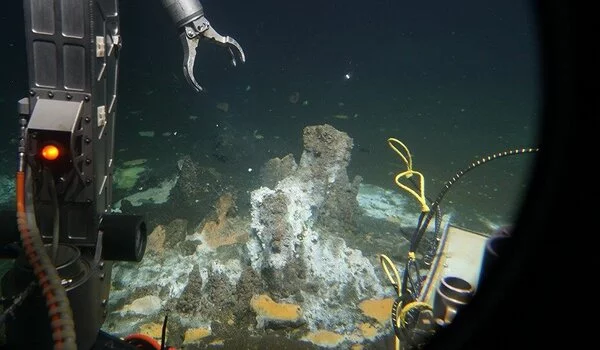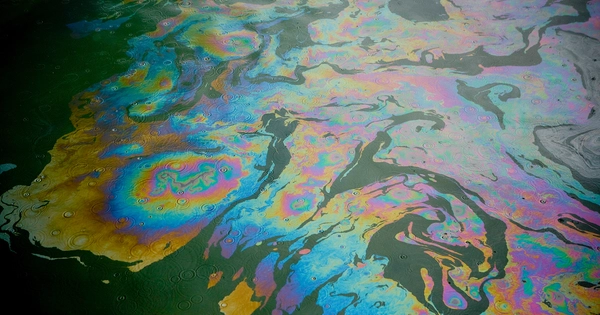One such approach involves the use of a type of virus known as an oncolytic virus. These viruses are programmed to infect and destroy cancer cells. Researchers have been looking into various types of oncolytic viruses, such as modified herpes simplex virus (HSV), adenovirus, and reovirus, among others.
One-third of all microorganisms on Earth live on the seafloor, which is inhabited even at depths of several kilometers. The abundance of microorganisms appears to decline only when temperatures rise too high. But how and from what do deep seafloor microorganisms live? How do their metabolic cycles work, and how do the members of these buried communities interact with one another? Researchers have now demonstrated in laboratory cultures how small, liquid components of crude oil are broken down by a group of microorganisms known as archaea using a novel mechanism.
Microbial communities are especially active near hydrothermal seeps, such as those in the Gulf of California’s Guaymas Basin. For many years, the research team has been working to better understand these communities. Organic material deposited in the Guaymas Basin is cooked by internal heat sources, converting it to crude oil and natural gas. In an otherwise hostile environment, their components provide the primary source of energy for microorganisms. The researchers demonstrated that archaea use a previously unknown mechanism to degrade liquid petroleum alkanes at high temperatures in the absence of oxygen in their latest study.
Alkanophaga and their relatives are targeting hydrocarbons in oil reservoirs thanks to newly discovered capabilities. As the remaining oil solidifies, it tends to settle to the seafloor.
Gunter Wegener
Alkanes are carbon and hydrogen compounds that are extremely stable. They are naturally occurring constituents of natural gas and crude oil. Humans refine the latter into fuels such as gasoline and kerosene. Accidents during crude oil extraction cause environmental disasters on a regular basis. The Deepwater Horizon drilling platform accident, for example, caused severe environmental damage in the Gulf of Mexico due to the toxic effects of crude oil compounds such as liquid alkanes.
Microorganisms, including alkanes, can rapidly degrade many components of crude oil in the presence of oxygen. However, without reactive oxygen, degradation is significantly more difficult. Organisms capable of performing this task have received little attention. In recent years, however, evidence has been found that archaea are able to employ a surprising mechanism to do this.
It is based on newly discovered variants of the key enzyme of methanogenesis and anaerobic methane degradation, methyl-coenzyme M reductase (MCR). The genes that encode these enzymes have been found in many environmental samples. However, laboratory cultures of the microbes that could illustrate the function of these enzymes were still lacking. This is where the laboratory study of Hanna Zehnle and her colleagues becomes significant.

The team used sediments from the 2000-meter-deep Guaymas Basin in the Gulf of California. The special geological conditions that exist here include high temperatures, liquid crude-oil components, and an anaerobic environment at shallow sediment depths, all of which are normally only found in deep-lying oil reservoirs which are difficult for scientists to access.
Researchers in Bremen prepared cultures with liquid alkanes and allowed them to grow anaerobically, that is, without oxygen, at high temperatures (70 degrees Celsius). “After a time,” first author Hanna Zehnle explains, “sulfide forms in the cultures.” This demonstrates that they are active.” DNA and RNA samples are used to study the composition of the cultures. “With this method, we can find out what organisms are living in this system and which metabolic pathways they are using,” Zehnle says.
These include the chemical reactions that occur when substances are metabolized. Archaea of the genus Candidatus Alkanophaga were discovered in the cultures. These archaea break down alkanes using MCR variants. The researchers confirmed this using transcriptome data, enzyme product measurements, and the inactivity of the cultures when the enzyme was inhibited. However, the organisms cannot degrade crude oil on their own. Respiration, in the form of sulfate reduction in this case (because no oxygen is present), is carried out by bacteria of the genus Thermodesulfobacterium, which form dense consortia with the archaea.
Methanogenesis is one of the oldest known metabolic processes and is a part of the global carbon cycle. The laboratory study by Hanna Zehnle and her colleagues shows that the enzymes involved in this process can also utilize liquid (and thus toxic) hydrocarbons which highlights the relevance of this pathway for the global carbon cycle.
“Alkanophaga and their relatives are targeting hydrocarbons in oil reservoirs thanks to newly discovered capabilities. As the remaining oil solidifies, it tends to settle to the seafloor,” explains corresponding author Gunter Wegener. “We have yet to investigate any deep oil reservoirs, but the archaea are certainly causing havoc in the oil industry with their activity. However, they also contribute significantly to the rarity of natural oil seeps.”





